 Written by Naheed Ali, MD, PhD
Written by Naheed Ali, MD, PhD
It is no surprise that conducting everyday activities can be more challenging for adults and kids living with special needs. Most products, from toys to appliances, are simply not designed with adaptability in mind. Enter Enabling Devices-- a company that has been designing tools, toys, and products to help people with disabilities for over 40 years.
The story at the heart of Enabling Devices is a simple but touching one. Founder Steve Kanor had a chance encounter at United Cerebral Palsy of Long Island that would change the trajectory of his life.
During this encounter, he noticed a boy sitting in his wheelchair with no toys. When Kanor asked the boy’s occupational therapist about the boy’s situation, he was informed that the boy had lacked motor skills that would enable him to play with toys.
Unsatisfied with this answer, Kanor returned the next morning with a purchased train set connected to a switch that the boy could control with his ear. This adaptability switch, and others like it, became some of Enabling Devices’ hallmark designs.
Read on for a detailed look at what they have to offer as well as some of their product features.
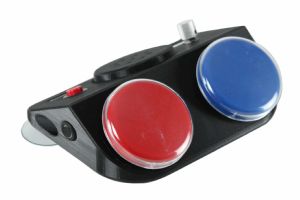 | Talkables Visual Message Communicators by Enabling Devices View Product |
According to the Autism Speaks foundation, An estimated 40 percent of people with autism are nonverbal.(Autism Statistics and Facts, n.d.). It would be a mistake though to assume that these children and adults do not need to communicate. Individuals like them simply cannot speak using words.
A visual communication system, also known as an AAC or Alternative and Augmentative Communication system, can be a great tool to help facilitate communication with nonverbal family members. There is a wide range of available AAC technology ranging from forms of sign language and printed picture cards to high-tech talk boards and even smartphone apps.
One of the most basic and reliable designs involves a simple layout wherein the user presses a button associated with a picture of a common want or need. The request is then played out loud on a speaker. The value of this simple communication method is tough to overstate. For parents of nonverbal children with autism, this can mean the child’s ability to tell you what (they) needed instead of crying and throwing a fit on the floor(SLPCarrie, n.d.).
| Gumball Assistive Technology Capability Switches View Product |
For children who have issues with fine or gross motor skills, controlling simple, battery-powered toys or devices can be difficult, if not impossible. Studies have shown, however, that ‘play’ is a foundational part of a child’s life. Playing with toys can help build fine and gross motor skills, social skills, communication skills, language, thinking, and problem-solving skills(Bennie, 2020).
One way to overcome the difficulty posed by small knobs, buttons, or other controls typical to battery-powered devices, is through the use of easy-to-press switches. These larger switches are sometimes called gumball switches because of their bright colors. These come in many sizes, colors, and textures.
A switch adapted toy is a toy that has been rewired to an adaptive switch for easier control. For some children, using a switch adapted toy is the first time they would have experienced independent control over something in their lives (Cerebral Palsy Alliance, 2014). Compatibility switches might also be used for turning lights on or off, operating a television, or for using a computer. Having the right switch can make a huge difference in the way that your child interacts with the world.
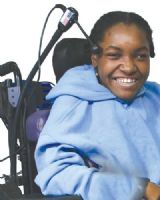 | Ultimate Switch - Assistive Technology Switch by Enabling Devices View Product |
Studies have shown that using adaptability switches allows children living with disabilities to better mobilize, communicate, play, and participate in schooling(Hoppenbrouwers et al., 2014). Whether that involves playing with toys or basic activities of daily life, having the right switch is of utmost importance.
This brings us back to Steve Kanor’s original problem: how can we help a child who can’t use a regular gumball compatibility switch? An adaptive switch is designed for use by even the most physically or neurologically restricted individual. Designed to engage from a minimal amount of force, an adaptive switch might be mounted near the user’s head so that it can be triggered with just a slight movement of the neck.
Even for users who can accommodate the more traditional gumball switch, there may be benefits to an adaptive switch solution in certain situations. Head or foot control for lights or other common switch needs can be wheelchair mounted instead of being fixed onto a particular place.
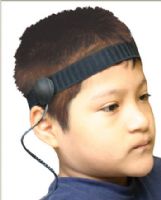 | Pediatric Universal Assistive Technology Tilt Switch View Product |
A tilt switch is any adaptive switch that can be attached to a body part like a head, arm, or leg. It is then activated whenever any of those body parts is tilted. Similar to the adaptive switch described above, a tilt switch can be configured depending on the ability of the user. Usually, the tilt sensitivity is adjustable to account for differences in range of motion between users.
One unique application for this type of switch is posture training. The switch can be attached to a toy or light and trigger when the user is positioned at a certain angle. Maintaining good alignment and posture is important for children with special needs. People with disabilities can develop problems with the symmetry of their body which can lead to permanent shortening of the muscles resulting in asymmetries(Carter, 2017). These asymmetries can cause health complications and reduce quality of life factors.
By using a non-invasive switch connected to a favorite toy to reinforce good postural habits, posture training can double as playtime. Good postural care early on has huge potential to improve lives and reduce the risk of complications from asymmetries.
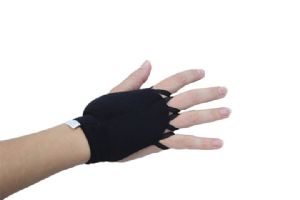 | Weighted Handwriting Glove View Product |
A study of handwriting in children with autism was able to positively conclude that kids with ASD have unique handwriting challenges and tend to develop an impairment. Other disorders, such as neurological tremors or fine motor tics, can also cause problematic disruptions to handwriting.
One solution is to adapt the writing utensil itself. Weighted pens and pencils are available, along with many grip variations. Adding weight increases the overall resistance during writing -- this can offset the effects of any irregular motions. In the case of autism specifically, the weight is meant to be a more noticeable, existent stimuli the child can react to.
In addition to changing the utensil or instrument, there are also solutions that address directly adding weight to the hand. A weighted handwriting glove can address many of the same issues as a weighted writing instrument and also allows for better grip when using standard pens and pencils.
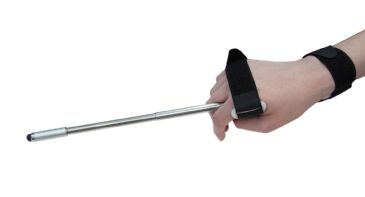 | Adjustable Touch Screen Stylus for Hand or Mouth View Product |
In the internet age, there are certain things that are necessary for daily life such as the use of touchscreen technology. Smartphones, tablets, and even some appliances rely on touchscreen technology to function. For people who have limited mobility or dexterity in their hands, an adjustable stylus can be a multipurpose tool for interacting with digital devices.
Unlike a traditional stylus, which might be pencil-sized or smaller that require grip strength, an adaptable stylus is designed to accommodate any level of hand function. The design involves straps at the wrist and hand connected to a telescopic pointer with a soft rubber tip. This allows for maximum control over touchscreen devices by allowing the user to also adjust for length if extra reach is needed.
Some models are designed to be held in the mouth and fitted with a bite tray. For users who are unable to use their arms, this is a flexible alternative.
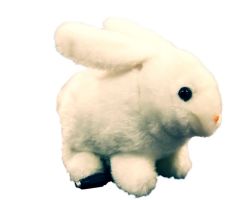 | Plush Stimulus Reward Switch Toys View Product |
One of the more difficult aspects of using some of the switches mentioned above is the process of retrofitting toys and devices so they can function using a simple switch. There are DIY guides available, but converting a standard children's toy to be an adaptive switch toy requires a certain level of technical knowledge.
Fortunately, there are companies, like Enabling Devices, that manufacture specialty adaptive toys. These plush animal toys can be operated using any of the accessibility switches mentioned above. These adorable plush toys move and make animal sounds with a simple push of a switch.
The plush reward switch toy line from Enabling Devices offers a model for every kid-- bunnies, kittens, puppies, and even a horse! These engaging toys can be a powerful positive stimulus for postural or behavior training. This multi-sensory and friendly experience encourages the type of play that can be so developmentally important for kids with disabilities.
For many people, the term adaptive technology probably conjures images of accessibility ramps, wheelchairs, and other large-scale mobility devices. These things are, without a doubt, important. What are often overlooked though, are the smaller details of daily life that can be tough for people growing up with a disability.
These can be seemingly simple situations such as setting an alarm clock or playing with a favorite toy. In a world where we increasingly rely on technology and digital devices, it is critically important that these devices are accessible to all people. This is where companies like Enabling Devices can provide such a benefit to the lives of people with different levels of ability.
When Steve Kanor saw that young child with cerebral palsy, what he saw was not limitations. What he saw was possibility.
Today, Enabling Devices is led by Seth Kanor-- Steve’s son. He is still carrying on what his father started with the same values of personal connection and knowledge.
To see even more products from Enabling Devices, take a look at our selection at RehabMart.

Dr. Ali is a physician by education and a writer by choice since 2005. He earned an MD degree in 2008 and later completed Harvard Medical School's lifestyle medicine training in 2012, before obtaining a PhD in holistic health elsewhere in 2013. He brings more than 15 years of experience working in a remote environment. Now a digital nomad, he’s currently a health and wellness writer.